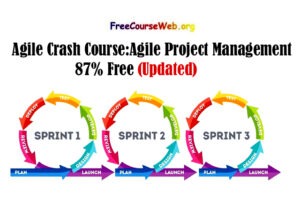AutoCAD Creating a comprehensive AutoCAD course from scratch to advanced level would require careful planning and structuring.
Here’s a rough outline to guide you through the process:
Beginner Level:
Introduction to AutoCAD:
What is AutoCAD?
Understanding the interface
Navigating through the workspace
Basic Drawing Commands:
Line, Circle, Rectangle, Arc, etc.
Using different methods to draw shapes
Object Snapping
Editing Commands:
Modify tools like Move, Copy, Rotate, Scale
Trim, Extend, Fillet, Chamfer
Layers and Properties:
Understanding layers and their importance
Assigning properties to objects
Dimensioning:
Adding dimensions to drawings
Dimension styles and settings
Text and Annotation:
Adding text to drawings
Creating annotations and leaders
Hatching and Gradients:
Applying hatches and gradients to objects
Customizing hatch patterns
Introduction to 3D:
Basics of 3D modeling in AutoCAD
Creating simple 3D objects
Intermediate Level:
Advanced Drawing Techniques:
Polygons, Ellipses, Splines
Multilines, Regions, Points
Advanced Editing Tools:
Explode, Join, Offset, Array
Stretch, Align, Mirror
Blocks and Attributes:
Creating and inserting blocks
Defining attributes within blocks
Advanced Dimensioning:
Dimension styles and overrides
Dimensioning in 3D space
Advanced Text and Annotation:
Formatting text
Creating tables and schedules
External References (Xrefs):
Attaching and managing Xrefs
Overlay vs. Attach
Advanced 3D Modeling:
Creating complex 3D objects
Mesh modeling vs solid modeling
Rendering and Visualization:
Applying materials and textures
Rendering settings and output options
Advanced Level:
Customization and Automation:
Introduction to AutoLISP and macros
Customizing the interface
Parametric Constraints:
Applying geometric and dimensional constraints
Creating parametric designs
Dynamic Blocks:
Creating dynamic block definitions
Using visibility states and parameters
Sheet Sets and Publishing:
Managing sheet sets
Batch plotting and publishing
Collaboration and Data Management:
Introduction to AutoCAD web and mobile apps
Sharing and collaborating on designs
Customization with AutoCAD APIs:
Overview of AutoCAD APIs (AutoCAD .NET, AutoLISP, ObjectARX)
Developing custom applications and plugins
Industry-specific Tools and Workflows:
Exploring specialized toolsets (e.g., Architecture, MEP, Civil 3D)
Workflow optimization tips
Tips and Tricks for Efficiency:
Keyboard shortcuts
Best practices for drawing organization and optimization
Project-based Learning:
- Throughout the course, incorporate project-based learning where students apply the concepts learned to real-world scenarios. This could include designing floor plans, mechanical parts, architectural structures, etc.
Assessment and Certification:
- Implement quizzes, assignments, and a final project to assess the students’ understanding.
- Offer a certification upon completion, indicating the proficiency level attained.
Resources:
- Provide supplementary materials such as video tutorials, exercise files, and a recommended reading list.
- Encourage students to explore AutoCAD’s official documentation and online forums for additional support.
By following this structure, you can create a comprehensive AutoCAD course that takes students from beginner to advanced levels, equipping them with the skills and knowledge needed to excel in the field.




